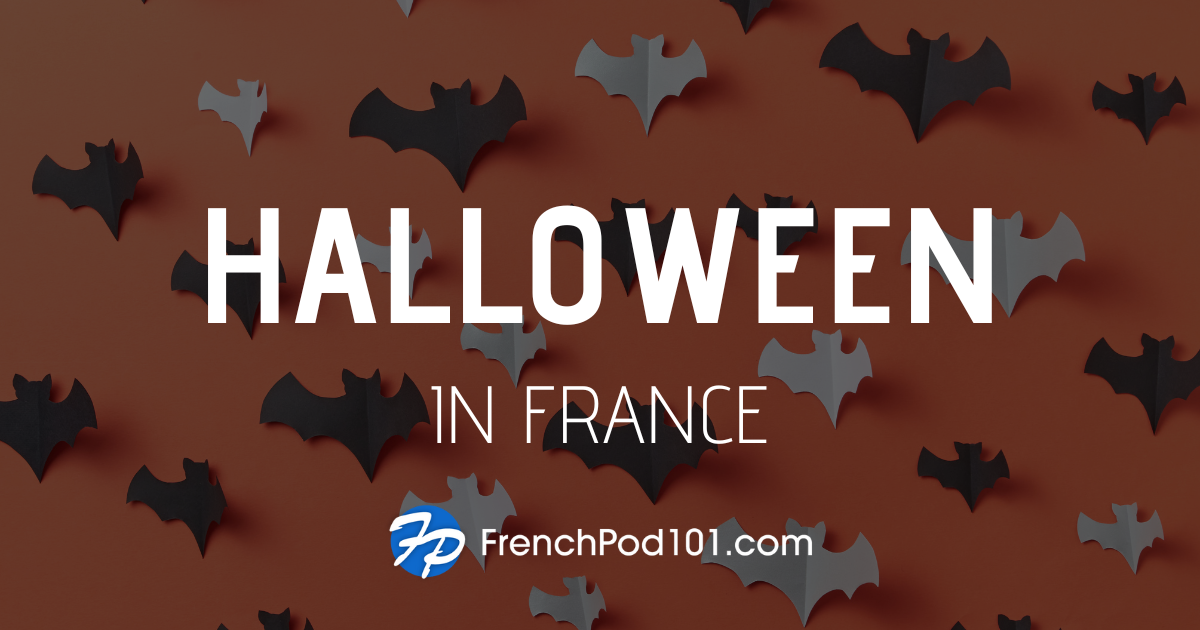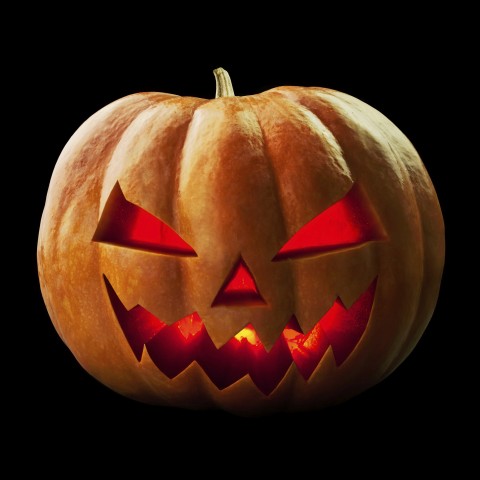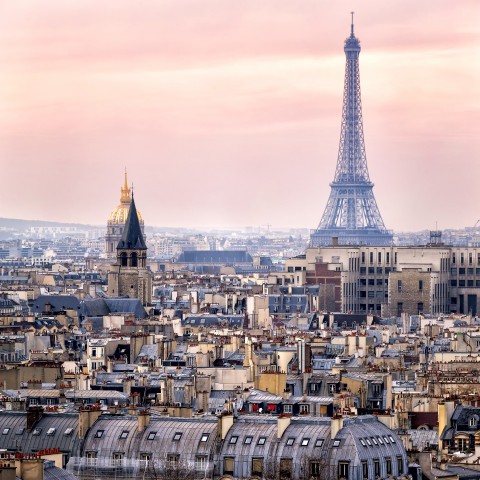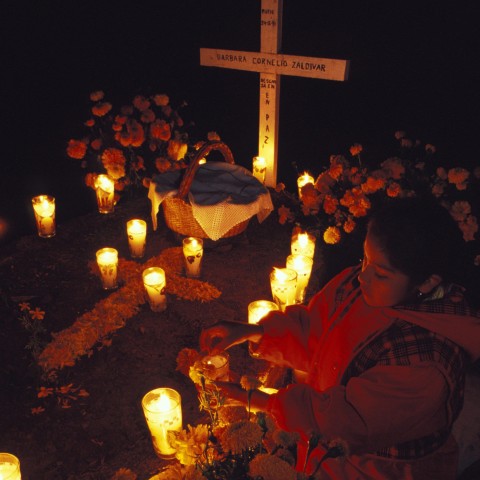
In France, October 31st is Halloween, and November 1st is La Toussaint (All Saints’ Day). These back-to-back observances have similar themes, but they reflect different traditions in France. On the one hand, Halloween in France is not a historical holiday at all – it only gained a foothold in the late 20th century via American cultural influence. In contrast, La Toussaint is a long-established French national holiday devoted to honoring saints and deceased loved ones.
This contrast often raises the question: Does France celebrate Halloween, and if so, how? The answer involves a blend of modern enthusiasm and respect for solemn tradition, as France negotiates a balance between imported fun and deeply rooted customs.
Table of Contents- Does France Celebrate Halloween?
- Halloween in Paris and Major Cities
- La Toussaint: All Saints’ Day on November 1st
- Tradition vs. Trend: A Cultural Balancing Act
1. Does France Celebrate Halloween?
In the late 1990s, Halloween was introduced to France primarily through American-style marketing campaigns and the influence of companies like Disneyland Paris. Before then, the holiday was virtually unknown in French culture. Major brands in the candy and toy industries began promoting Halloween with U.S.-inspired advertisements, and suddenly pumpkins, skeletons, and witches filled shop displays across France. This sudden arrival sparked excitement among children but skepticism among many adults.

To older generations, Halloween felt like a foreign and overly commercial event with no place in France’s traditions. Some even viewed it as a threat to the solemn observance of All Saints’ Day the following day. By 2006, the backlash was so intense that one French newspaper bluntly declared “Halloween est mort” (“Halloween is dead”).
Despite this early resistance, Halloween in France never completely died out. In recent years, attitudes have been slowly shifting, especially among younger people. French youth and city-dwellers have shown a growing interest in Halloween as a fun social occasion—throwing costume parties, dressing up, and decorating bars or clubs in spooky themes.
Retailers have taken note as well: by October, French supermarkets now stock a modest selection of pumpkins, costumes, candies, and other Halloween merchandise (though on a far smaller scale than the saturation seen in the United States). Overall, however, France’s Halloween celebrations remain relatively low-key and inconsistent, highly dependent on local enthusiasm. It is still not a mainstream holiday across the country – more a niche event enjoyed by children and young adults, while often ignored or even disapproved of by older generations.

One clear indicator of Halloween’s limited reach in France is the weak tradition of trick-or-treating. In some areas, children do dress up and go door-to-door on Halloween night, but this practice is relatively rare and varies widely by neighborhood. There won’t be large gatherings of costumed trick-or-treaters – in many places, there won’t be any, or just a few small groups at most.
French children who do try trick-or-treating typically use the phrase « Des bonbons ou un sort ! » (“candies or a spell!”) as a direct translation of “trick or treat”.
Still, the lack of an entrenched tradition means many French households aren’t prepared with candy, and spontaneous doorstep visits aren’t always welcome. Instead, Halloween night in France is often marked by private gatherings or organized events (such as school festivals or village parties) rather than neighborhood-wide antics.
2. Halloween in Paris and Major Cities

In large cities like Paris, Halloween has a more visible presence compared to the rest of France. Disneyland Paris, for example, hosts an annual Halloween festival throughout October, complete with elaborate decorations, costumed Disney villains, special parades, and late-night events. This month-long celebration at France’s biggest theme park offers a truly US-style Halloween experience in the heart of Europe – a clear sign of the holiday’s imported nature.
Within Paris itself, you won’t see entire residential neighborhoods decked out for Halloween as you might in an American suburb, but there are still festive hotspots. Many expatriate communities and some French families in the city organize their own trick-or-treat outings in apartment complexes or arranged routes. However, these are the exception rather than the rule.
More commonly, Halloween in Paris is celebrated through costume parties and themed nights. Numerous bars and nightclubs throw Halloween bashes – often with costume contests and spooky décor – which have become popular with students and young professionals in recent years.
For those looking for a thrill, Paris also offers naturally eerie attractions. The most notable is the Paris Catacombs, the infamous underground ossuary housing the remains of over six million people, which can be chilling to visit around Halloween.
Other sites, like old Parisian cemeteries or supposedly haunted historic locations, occasionally host tours or events tapping into the spooky season. In short, Paris Halloween festivities do exist – from theme park events to nightlife ones – but they tend to be localized and small-scale, highlighting that the holiday in France is still a budding, urban-centric phenomenon rather than a countrywide craze.
3. La Toussaint: All Saints’ Day on November 1st

The day after Halloween, November 1st, is La Toussaint – All Saints’ Day, a deeply rooted French event. La Toussaint is a French holiday, meaning schools, banks, and many businesses across the countries are closed.
In the Catholic tradition, this date is the Feast of All Saints, dedicated to honoring all the saints and martyrs. It has been celebrated in France for many centuries; in fact, by the 8th century, the Church had officially established November 1st as a holiday for the Feast of All Saints (moving it from an earlier date in spring). This long history makes Toussaint an integral part of French culture.
What is All Saints’ Day exactly? It is a day for remembrance and reflection. The focus is on honoring the departed and the sacred, in stark contrast to Halloween’s playful spookiness.
On La Toussaint, families throughout France attend church services and then visit cemeteries to pay respects to deceased relatives. Graves are tidied and lovingly decorated with flowers, especially chrysanthemums, which have become the traditional bloom of Toussaint remembrances. It’s common to see markets overflowing with chrysanthemums in late October, as people purchase pots of these hardy flowers to place on the tombs of loved ones.
The choice of chrysanthemum is symbolic – in French culture, these flowers represent remembrance and are almost exclusively used for cemetery tributes around All Saints’ Day.
On this day, many cemeteries glow with candles. They are vibrant with the colors of autumn flowers, creating a quiet, reflective atmosphere as families gather to remember those they have lost.

La Toussaint is widely observed across generations. Even those who are not actively religious often participate by visiting family graves or at least taking the day off to spend time with family. The date also coincides with a school break – a two-week autumn holiday often called les vacances de la Toussaint – meaning many people travel to their hometowns for the occasion.
For most French people, November 1st is thus reserved for solemn memorial activities and family gatherings, reinforcing how deeply ingrained All Saints’ Day is in the national calendar. In this context, the excitement of Halloween is easily overshadowed by the importance of La Toussaint.
4. Tradition vs. Trend: A Cultural Balancing Act
The back-to-back timing of Halloween and La Toussaint in France highlights a striking cultural contrast. It’s essentially a playful night followed by a sacred day – October 31st’s costumes and candy give way to November 1st’s lighting of candles and contemplation.
For many in France, this contrast can feel jarring: an evening of make-believe skeletons and ghosts immediately precedes a day of genuine remembrance for the souls of the departed. This may be one reason Halloween has not fully integrated into French life; the nation already has La Toussaint to spiritually and culturally address the themes of death and memory, in a far more earnest way. In other words, France doesn’t “need” Halloween in the same way, as the solemn traditions of Toussaint fulfill that role of honoring the dead.
Nonetheless, France’s approach to these holidays is gradually evolving. Halloween, though still not a cornerstone of French tradition, has found a small but growing place, especially among the young. It remains a celebration mainly enjoyed by children and adolescents, while many older French people remain indifferent or even resistant to it.
This mix of fascination and hesitation reflects a broader aspect of French society: a careful balance between openness to global influences and attachment to established heritage. On one hand, younger generations in France are increasingly curious about Halloween’s fun and creativity; on the other hand, the country as a whole remains deeply committed to observing La Toussaint with reverence and familial duty.
In summary, Halloween and La Toussaint in France coexist as a study in contrasts. Halloween in France is an imported trend – vibrant but limited in scope – while La Toussaint is a time-honored observance that commands nationwide respect.
Come late October, some French households carve pumpkins or dress up for Halloween night, but by the next morning, France as a whole slows down to honor its saints and remember its dead. The result is a unique cultural scene: two very different celebrations, one after the other, each in its own way marking the turn of the season and the enduring balance between spooky festivities and solemn tradition in French life.








